Pink shade perennials are a great way to bring a nice pop of color to your garden in late spring or late summer. From pale pink to bright pink, there are different flowers with different shapes and sizes to consider. If you’re looking for perennials that do well in shady areas, this list is for you.
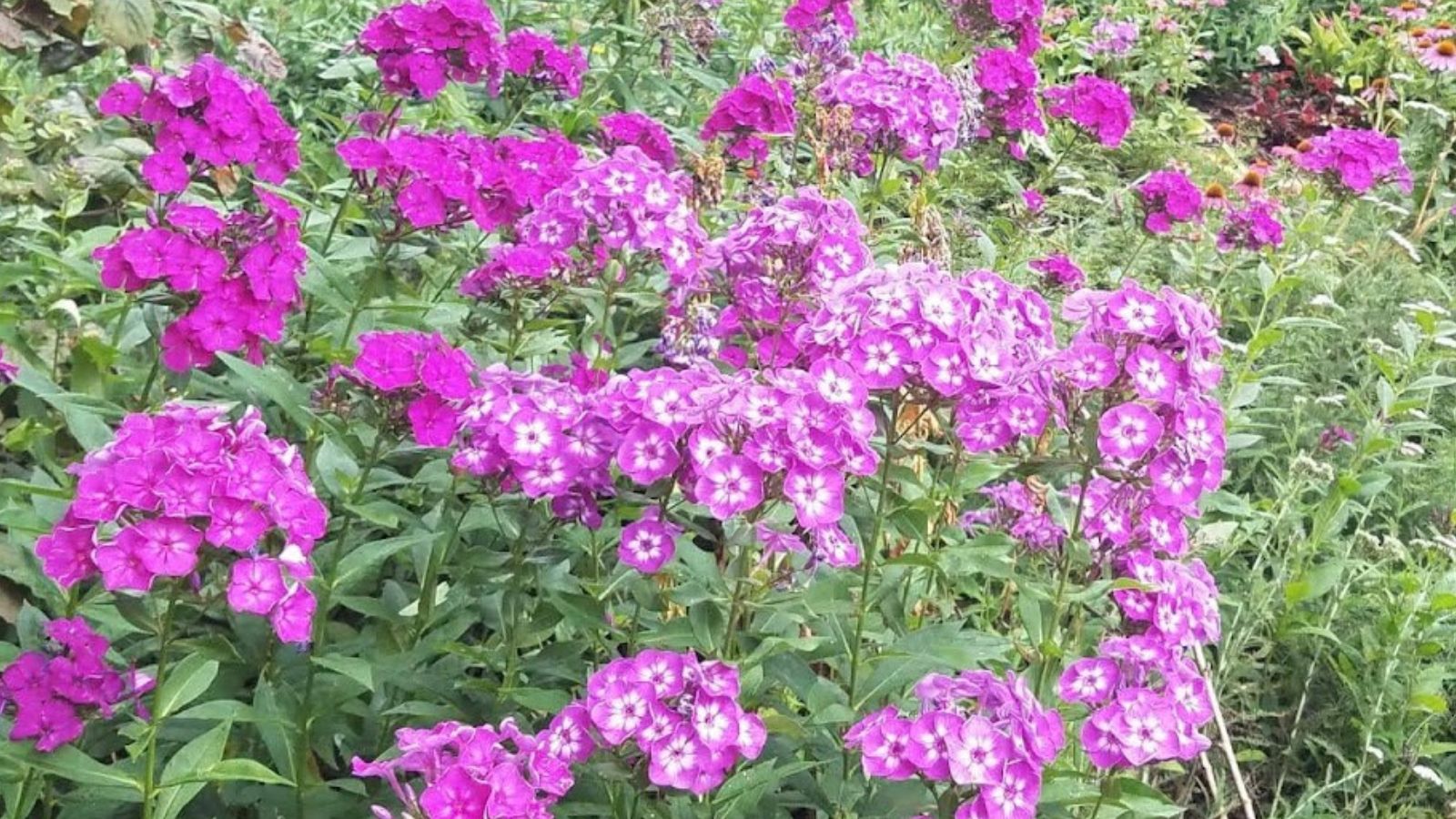
Favorite Pink Shade Perennials
Here are some popular pink shade perennials to add to your low-light garden.
1. False goat’s beard (Astilbe)

With its feathery-shaped pink flowers, false goat’s beard is a low-maintenance plant that thrives in partial to full shade and moist soil. These plants belong to the Saxifrage family and are also known as false spirea.
There are over 25 species of Astilbe, and they are known in North America for their fluffy, plume-like flower clusters that bloom in shades of white, pink, purple, and red.
They prefer moist, well-drained soil and partial shade to full shade and are hardy to zones 4 to 9. Astilbe plants are generally not affected by pests or diseases. However, they can be susceptible to fungal diseases in wet or humid conditions.
Astilbe plants are easy to grow and care for, and they can be propagated through division in the spring or fall. They are often used in woodland gardens, shade gardens, and as ground cover in areas where grass and other plants struggle to grow due to low light levels.
2. Hellebore (Helleborus)

Here’s another pink shade perennial that can also come in other colors such as purple, green and even black. Hellebore is a genus of perennial flowering plants that belong to the Ranunculaceae family. These perennial plants are also known as Lenten rose or Christmas rose and are native to Europe and Asia. They are a popular garden plant due to their beautiful, long-lasting flowers and their ability to grow in a shady garden.
Hellebores prefer well-drained soil that is rich in organic matter, and they thrive in partial to full shade in zones 4 to 9. They are low-maintenance plants that require minimal watering and fertilizing and are generally pest and disease resistant.
3. Bleeding heart (Dicentra)
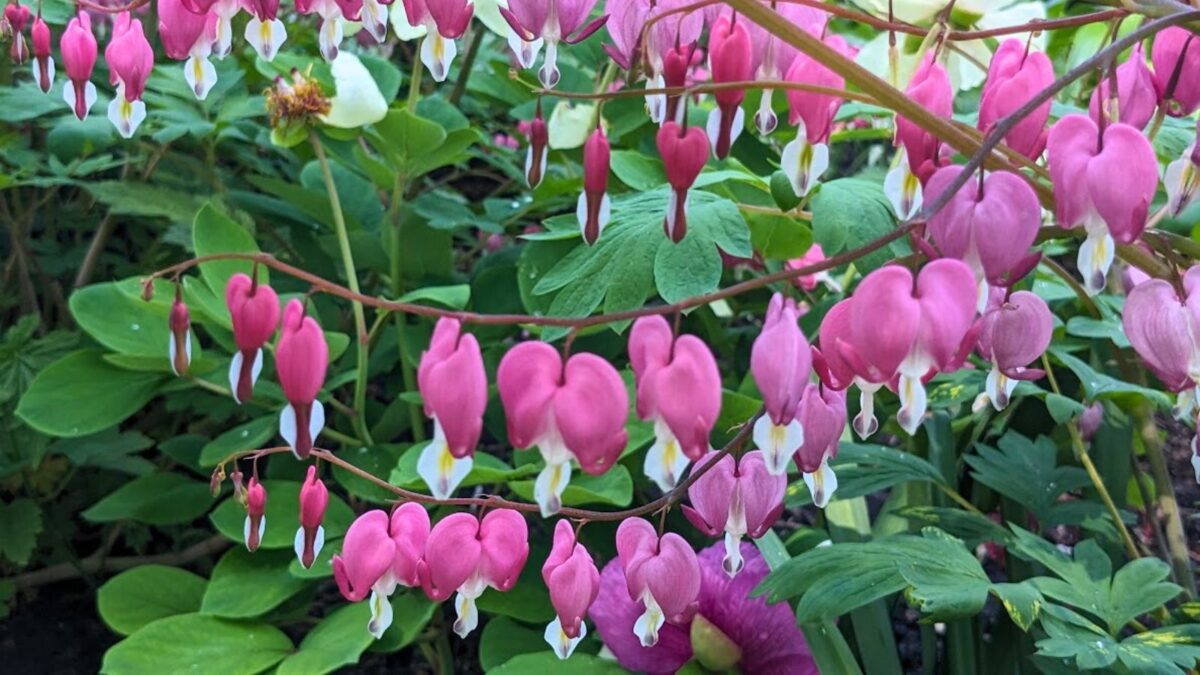
Bleeding heart has delicate, heart-shaped flowers in shades of pink and white. It prefers partial to full shade and well-drained soil. It can also benefit from regular watering during dry soil periods.
The flowers of bleeding heart plants are pendulous, with two large outer petals and two inner petals that are fused at the base, forming a shape that resembles a heart. They are typically pink, red, or white in color, and bloom in the spring or early summer.
Bleeding heart plants prefer moist, well-drained soil and partial to full shade. They are hardy perennials and can be grown in USDA zones 3-9. They are relatively low-maintenance plants, requiring only occasional watering and fertilizing.
Learn more about growing bleeding hearts.
4. Coral bells (Heuchera)

Coral bells have pink or red foliage and small, pink, or white flowers. They prefer partial shade and well-drained soil. They can also be divided every few years to keep them healthy.
In addition to their ornamental value, coral bells have some medicinal uses. Native Americans used the roots of some Heuchera species to treat a variety of ailments, including stomach cramps and headaches.
5. Garden phlox (Phlox stolonifera)
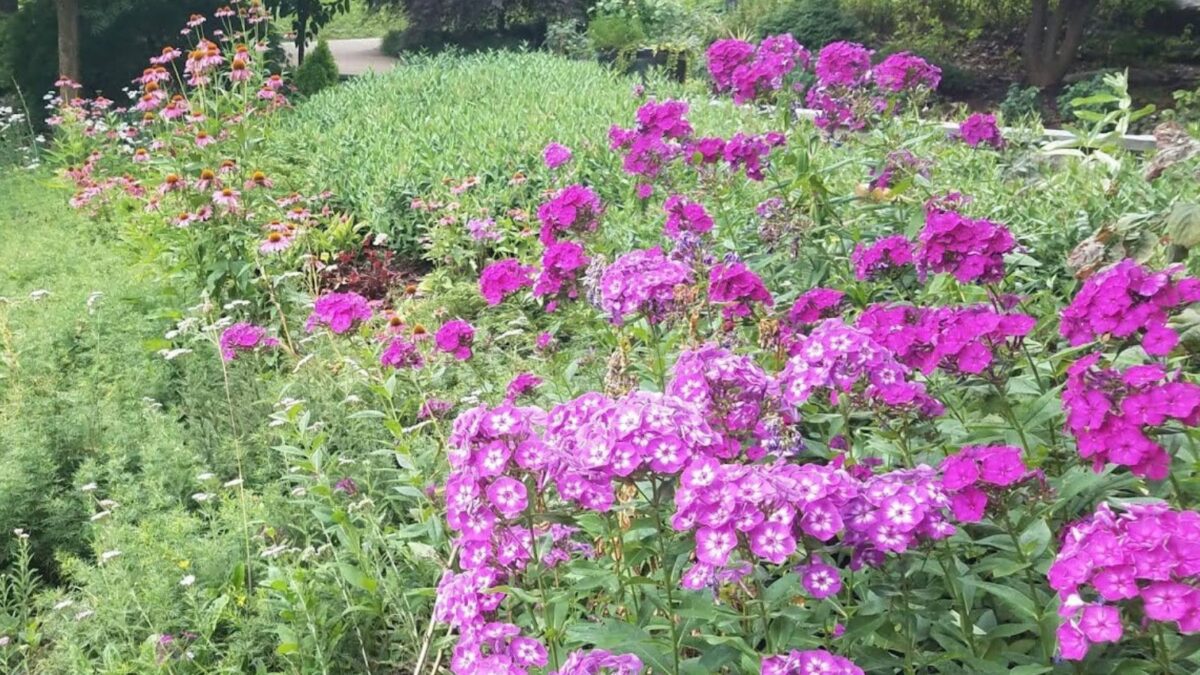
They are hardy perennials and can be grown in USDA zones 4-9. They are relatively low-maintenance plants, requiring only occasional watering and fertilizing, making them a great choice for your flower bed.
Garden phlox has pink, white, or purple beautiful flowers and prefers partial to full shade and well-drained soil.
Pink phlox plants can grow up to 3 feet tall and have narrow, lance-shaped leaves that grow in an opposite pattern along the stem. The flowers are typically pink, although they can also be white, purple, or red, and are arranged in clusters at the top of the stems. The flowers have five petals that are fused at the base, forming a tube-like shape, and have a sweet fragrance that attracts bees and butterflies.
Pink phlox prefers well-drained soil and full sun to partial shade. They are hardy perennials and can be grown in USDA zones 4-8.
See how easy it is to plant creeping phlox.
6. Lungwort (Pulmonaria)

Lungwort is a perennial plant that is prized for its attractive foliage and early spring flowers. The plant is native to Europe and Asia and thrives in shady, moist environments.
Lungwort typically grows to a height of 8-12 inches and spreads slowly by rhizomes to form clumps. The leaves of lungwort are large and are usually green with white or silver spots. Its flowers bloom in early spring and are tubular-shaped and pink, blue, or purple in color.
Pulmonaria is hardy to USDA zones 3-8 and prefers moist, well-drained soil. Lungwort is often grown for its ornamental value in shaded borders, woodland gardens, and rock gardens.
7. Fern-leaf bleeding heart (Dicentra eximia)
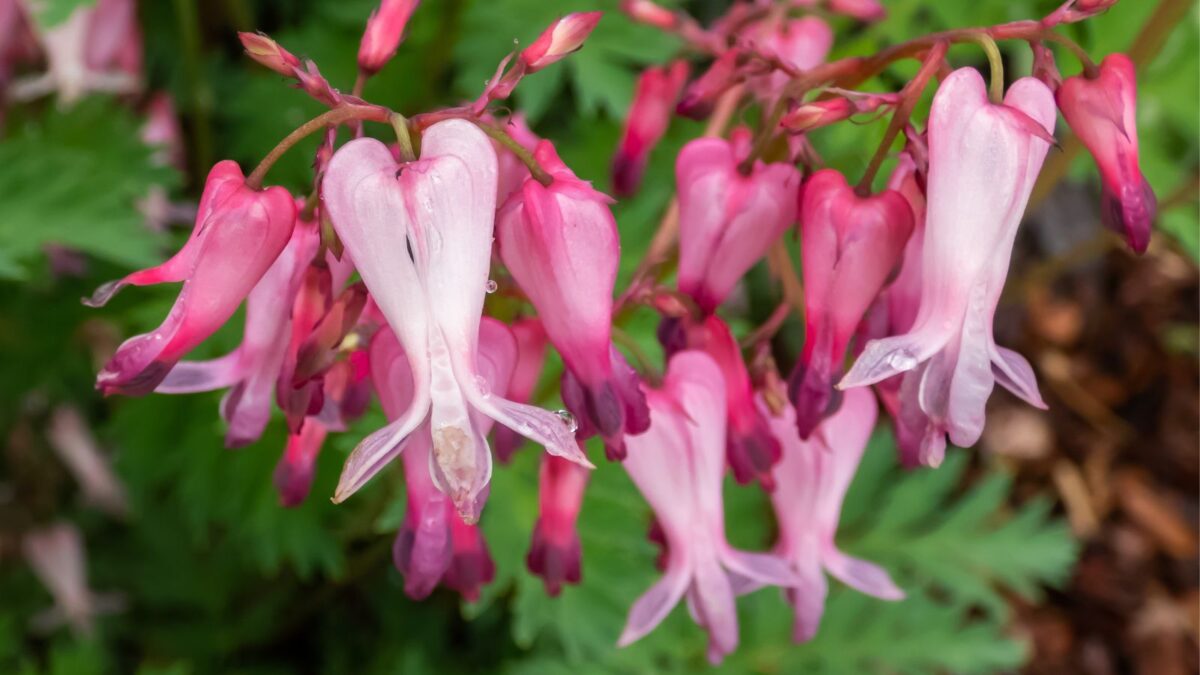
Fern-leaf bleeding heart plants can grow up to 1-2 feet tall and have finely divided, blue-green leaves that resemble fern fronds. The flowers are typically pink or white and are arranged in clusters on arching stems. The flowers have four heart-shaped petals and a distinctive protruding spur at the base.
Fern-leaf bleeding heart prefer well-drained soil and partial shade. They are hardy perennials and can be grown in USDA zones 3-9.
8. Foxglove (Digitalis purpurea)
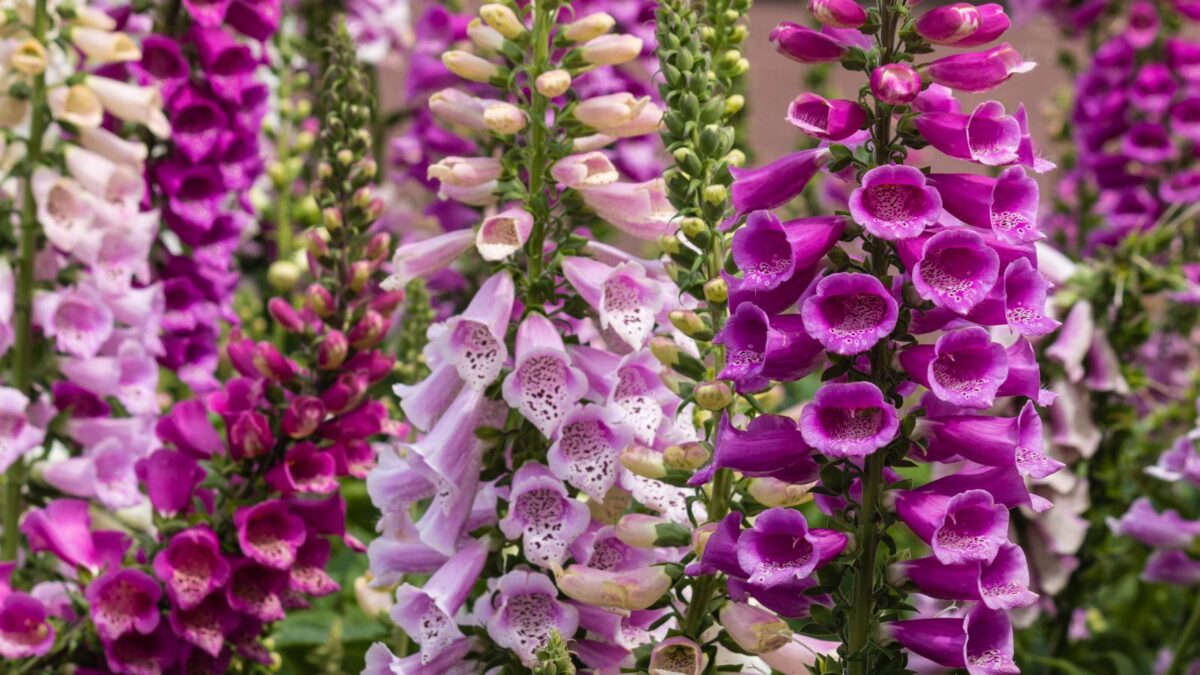
Here’s a tall plant to consider for your shade garden. Foxglove plants can grow up to 5 feet tall and have green, lance-shaped leaves that form a basal rosette. The flowers are typically bell-shaped and can be pink, purple, white, or yellow. The blooms of this plant are arranged in a tall, spiky inflorescence that can contain dozens of individual flowers.
Pink flower foxgloves prefer moist, well-drained soil and partial shade, although they can also tolerate full sun in cooler climates. They are also fairly easy to grow from seed and can self-seed if allowed to go to seed.
Pink flower foxgloves are the most common variety of foxglove, and they are often grown as ornamental plants in gardens. Like the blue flower foxglove, they belong to the family Plantaginaceae and are biennial plants that bloom in the second year of growth.
9. Primrose (Primula vulgaris)

The common primrose is a species of flowering plant that belongs to the Primulaceae family. This charming and delicate perennial plant is native to western and southern Europe and is popular for its vibrant and colorful blooms.
Primrose typically grows best in partial shade in zones 4 to 8, and it blooms in early spring with a range of colors, including white, pink, yellow, and purple. Its flowers are held on slender stems above a rosette of dark green leaves, and each blossom has a distinctive yellow center. With its lovely colors and delicate appearance, the common primrose is a delightful addition to any garden or landscape.
Other Shade Perennials to Try
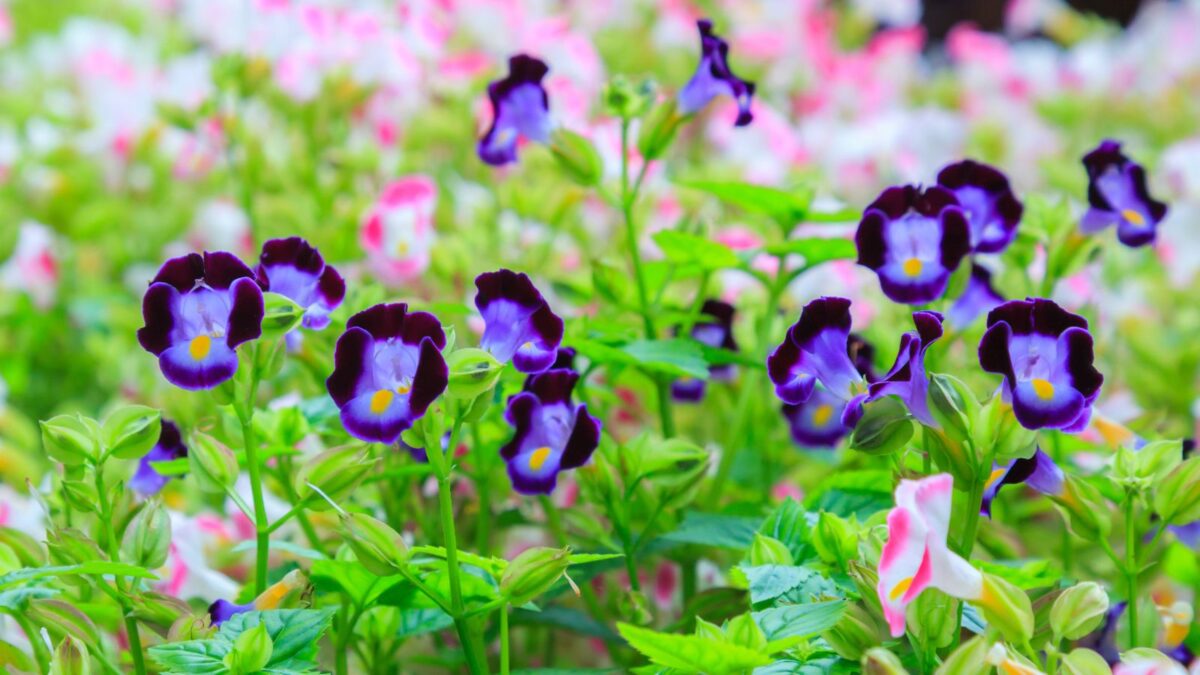
Pink flowers are absolutely delightful, but don’t be afraid to experiment with combinations of color. Yellow flowers offer a nice contrast to the pink blooms we shared above. So do lavender flowers and other purple blooming flowers.
Also, try some variegated foliage to add more texture to your landscape. Variegation refers to the presence of different colors or patterns on the leaves of a plant, such as stripes, speckles, or splotches. These variations in color and pattern can create a striking contrast against other plants and add depth and dimension to your garden design.
In other words, have fun mixing and matching different colors, shapes, and sizes of flowers. Here are some other lists of colorful perennial flowers that love shade (or partial shade):
- 11 shade-loving plants
- 9 blue shade perennials
- 10 purple shade perennials
- 10 yellow perennials for shade
- 5 red shade perennial flowers
- 11 orange perennial flowers that love the shade
Planting a few pink perennials that grow in the shade will bring a sense of romance to those shady spots in your garden. The plants listed above offer a wide range of hues, sizes, and textures, making them versatile and appealing to gardeners of all preferences. From charming and delicate bleeding hearts to bold and beautiful Astilbes, these pink perennials offer a splash of color and vibrancy to shady areas.
So, whether you’re a seasoned gardener or just starting out, consider incorporating these lovely pink perennials into your landscape to enjoy their beauty year after year. With a little love and care, these plants will reward you with stunning blooms and add a touch of pink elegance to your outdoor space.
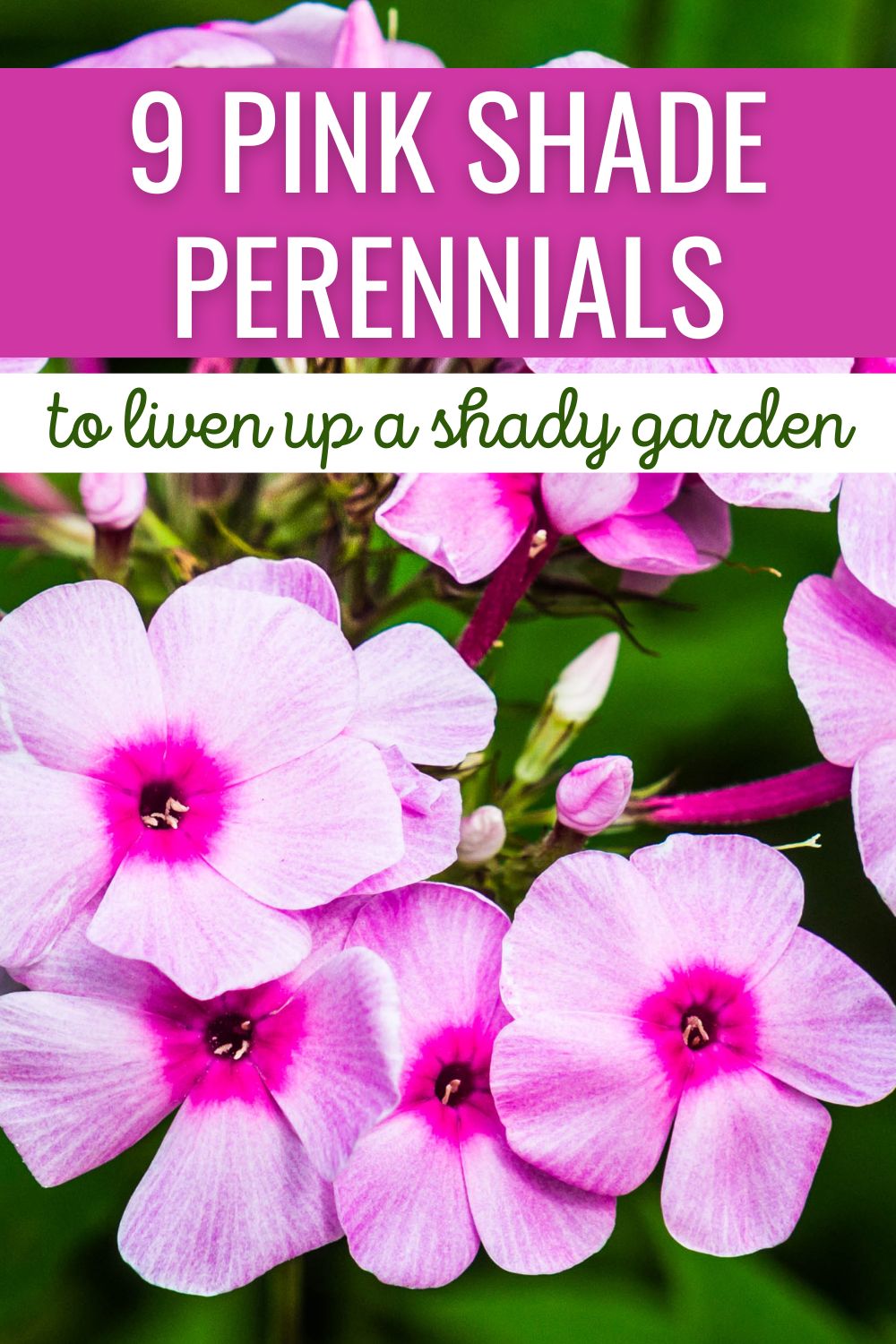

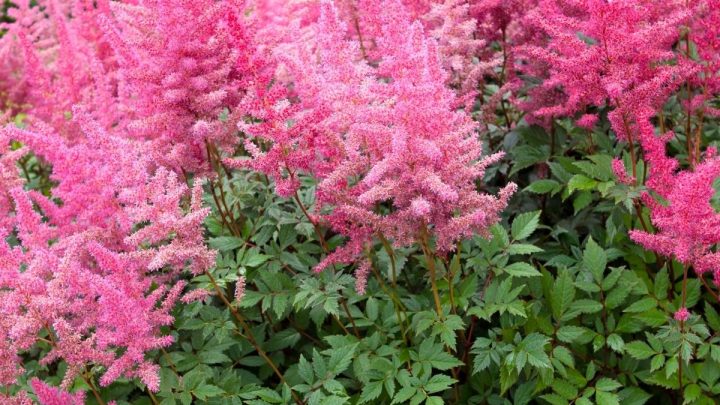




![Greenwood Nursery/Live Ground-Cover Plants - Pink Creeping Phlox + Subulata - [Qty: 2X Pint Pots] - (Click for More Options/Quantities) Greenwood Nursery/Live Ground-Cover Plants - Pink Creeping Phlox + Subulata - [Qty: 2X Pint Pots] - (Click for More Options/Quantities)](https://m.media-amazon.com/images/I/41Dc+q0ZrjL._SL500_.jpg)





17 Best Shade Perennials For Low Light Gardens
Sunday 13th of August 2023
[…] out my list of pink shade perennials (with […]
10 Yellow Perennials For Shade You'll Fall In Love With
Sunday 2nd of April 2023
[…] 9 pink perennials for shade […]
10 Great Purple Shade Perennials For Your Garden
Sunday 2nd of April 2023
[…] 9 pink shade perennial flowers […]
9 Stunning Blue Shade Perennials
Sunday 2nd of April 2023
[…] 9 pink shade perennials […]